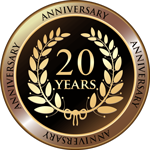Email is a like big magnet, right?
It’s ever-present and never-ending. And it tends to rule our days arbitrarily.
I get it. Email is like a magnet for all of us, because we succumb to its pull very easily as we hope to keep it under control as often as possible.
Staying in control is the name of the game. Who wants to be blind-sided or surprised? Said no one.
And you don’t want egg on your face if you miss something.
So, it’s EASY to get stuck in email jail and feel like you’re “living from the Inbox,” answering emails all day. Here are a few reasons why…
✔️ You feel “in the know” when reading a new email. You’re in the loop, you know what’s going on, and you aren’t missing out.
✔️ You feel connected when reading email. It’s a form of social interaction and communication with others.
✔️ It’s entertaining to read email, whether email brings more interesting reading, purposeful work, or fun messages to break up the daily grind.
✔️ You feel a sense of community when answering email. You’re a part of the team. When emails go back and forth between you and your co-workers, you feel engaged and heard.
✔️ It’s an accomplishment when you can reply to or forward emails, and then file or delete them.
✔️ It feels efficient when you can file or delete emails without having to do anything else.
✔️ It feels productive to get something done right then and there, and NOT add a to-do on your to-do list.
Taking these actions can feel like progress, but I’m sorry to report that they’re only the tip of the iceberg.
If you don’t know what to DO with the emails—or the tasks, information, or attachments within—AFTER you’ve read, replied to or forwarded those emails, you’re automatically going to lose time and productivity.
Why? Because you’re leaving email in the Inbox until you know how to deal with them.
But email is NEVER best managed while it’s still sitting in the Inbox.
When it’s left to build up, that means you’re using the Inbox as a file cabinet and a to-do list, which makes it impossible to stay on top of what you need to do, know where you need to be, and know where your information is. You’ll spend more time looking for things, catching up, re-reading, and back-tracking.
The more email continues to roll in and scroll off the screen, the less control you have.
You’re at risk for losing tasks, forgetting follow-ups, missing opportunities and events, and losing track of conversations, information, and requests.
You worry that important information and tasks have been missed, lost, or forgotten.
In summary, email is STILL a leading cause of wasted time and lost productivity.
But it doesn’t have to be.
The first thing to understand is that email is not the problem. The problem is not having a way to manage it.
Take these steps to better manage email and regain lost time you can spend more productively.
- Remove All Temptation
Turn off all email alerts, chimes, notifications, and pop-ups that tell you a new email has arrived. Alerts break your train of thought and concentration, and this is the LAST thing you need when you’re trying to keep your focus and get things done on tasks outside of the Inbox.
- Use a Reliable System to Manage Tasks
Did you know that email management is really task management in disguise? Yep, it’s information management in disguise, too.
If you’re working WITHOUT a system to manage tasks or WITHOUT systems to manage various types of information, you’re ALREADY in a bind.
That’s why it can be such a challenge to manage email. This is ESSENTIAL to understand.
So, to best manage tasks and information, you must get these emails—or the information, tasks, and attachments within—OUT of the Inbox. Seriously. You have to get it out.
Filing and deleting are easy, but the rest MUST go somewhere else in order to be best managed for ACTION (that’s your single, central task management system) and for future REFERENCE (and there are many places where you can store information.)
- Check Email at Intervals throughout the Day
You’ve heard the advice about checking email just once a day or twice a day at specific times, right?
That’s a VERY rigid approach and not one I would recommend (and that’s coming from a routine-oriented person!)
The truth is, no matter the timing, you want to get a few tasks accomplished first. THEN go look at email.
In Taskology, a task is designed to be small and achievable—and take a limited amount of time (which is part of the formula)—and this makes it EASY to understand how many tasks you can accomplish on any given day.
Get a few tasks accomplished early on in your day and THEN go look at email—and in Taskology, that means getting it back to ZERO.
Once that happens, then you go back to your Task List and accomplish the next most important task of the day. You simply toggle back and forth throughout the day between tasks and email.
No need for rigid, set times. No need for a schedule. It’s different for every person and from day to day, the cadence will change, but the concept remains the same.
- Process Email. Don’t Just Check It.
When you look at your email Inbox and you only have time to check for urgent emails, that’s fine. But getting email under control requires PROCESSING it OUT of the Inbox.
In this phase you’re replying to emails, forwarding emails, filing emails, and deleting emails. You’re also saving attachments, getting contact information into Contacts, adding events to the Calendar, and the most important of all…
Adding tasks to your Task List.
Make sure you protect enough time in your day to literally PROCESS email OUT. It’s no different than getting voice mails OFF of your phone. It’s just a different kind of communication.
Ultimately, you CAN reduce the magnetic effect of email and avoid “living from the Inbox” by making emails disappear… the FIRST time you read them.
When you know how to process email OUT of the Inbox, you’re free to use your time elsewhere—to focus on accomplishing tasks, completing projects, and moving initiatives forward that matter the most.
Want to dive deeper into mastering your email? I recently talked about these strategies on the “Pull the Chute” podcast with Jeff Sesol and Janna Landry Listen in to learn more about processing emails and avoiding the overwhelm of a cluttered inbox.
Take control of your email and you’ll take control of your time and productivity, too.



